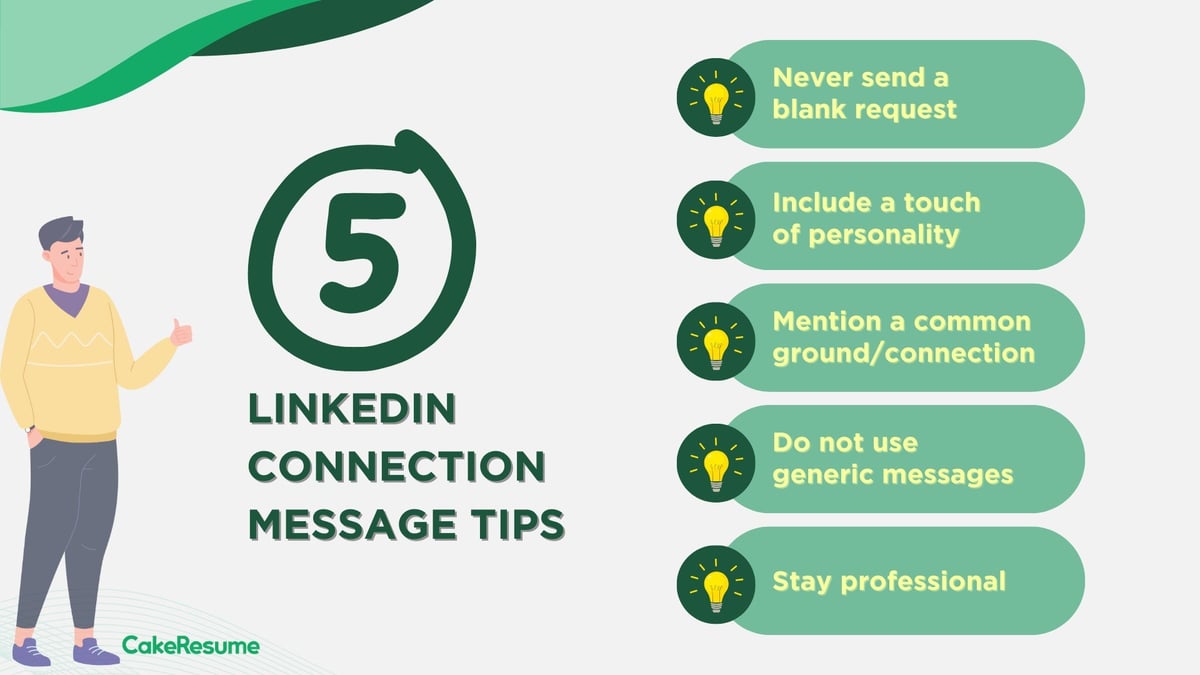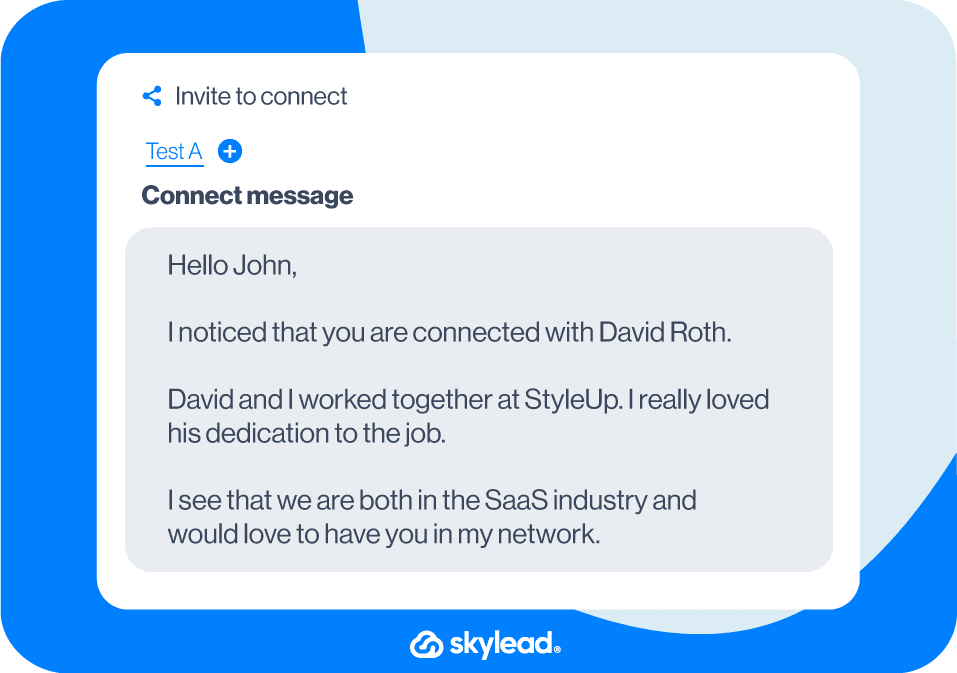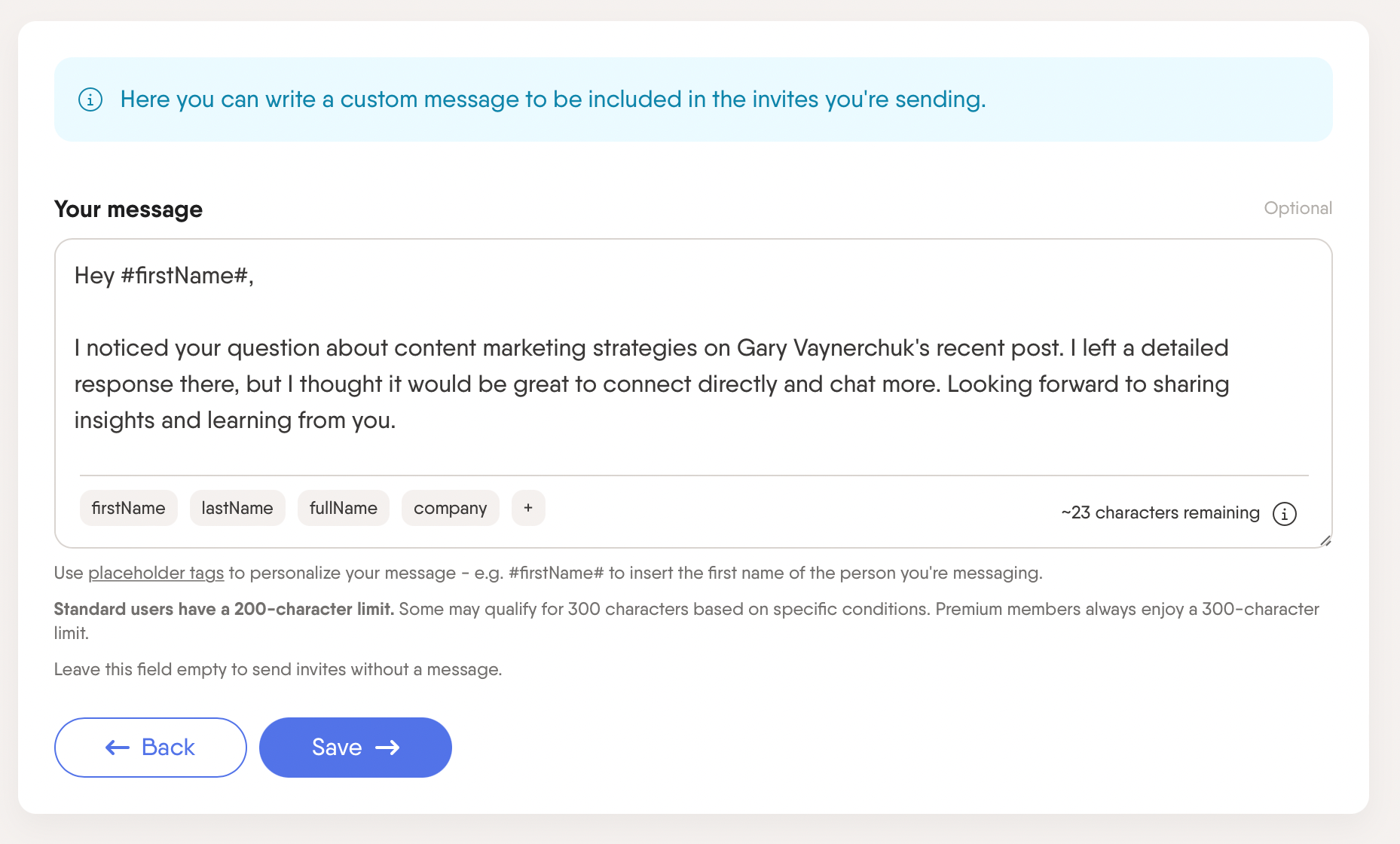In today's digital age, LinkedIn has become the go-to platform for professionals looking to expand their network and enhance their career opportunities. But how do you craft the perfect message to make those connections? Whether you’re reaching out to a potential mentor, a colleague, or someone in your dream industry, a well-written message can set the tone for a fruitful relationship. In this post, we'll explore the importance of making connections on LinkedIn and share tips on creating messages that resonate.
Importance of Making Connections on LinkedIn

Building a robust professional network on LinkedIn can open doors to countless opportunities. Here are some reasons why making connections on this platform is vital:
- Career Advancement: Having a solid network can lead to job referrals, recommendations, and even job offers. Many companies prefer candidates who come pre-vetted through referrals from trusted connections.
- Knowledge Sharing: Connecting with industry leaders and peers allows you to share insights, trends, and best practices. This exchange of information helps you stay ahead of the curve in your field.
- Personal Branding: With each meaningful connection, you can enhance your personal brand. A well-connected profile stands out and demonstrates your engagement within your industry.
- Mental Support: Networking isn’t just about career moves. It also offers emotional support. Connecting with like-minded individuals can provide you with encouragement and motivation when you need it most.
Let’s dive deeper into why these connections matter:
1. Expanding Your Professional Network
LinkedIn is a powerful tool for expanding your professional network. Each connection can introduce you to their network, multiplying your reach. Imagine having access to countless professionals instead of just a few: this increases your visibility and potential collaborations exponentially. In fact, many successful professionals attest to the ripple effect of networking. A single connection can lead to unexpected opportunities.
2. Access to Job Opportunities
Many job openings are never advertised publicly. According to several studies, around 70% of jobs are obtained through networking. When you connect with industry professionals on LinkedIn, you often gain insider knowledge about job openings before they hit the market. Additionally, your connections can act as internal advocates, increasing your chances of landing interviews. Remember, it’s not just about sending a resume; it's about being a known and trusted candidate.
3. Skill Development and Learning
LinkedIn is not just a platform for job seekers; it’s also a knowledge hub. Many professionals share articles, resources, and insights that can help you develop key skills. By connecting with thought leaders and participating in discussions, you can learn about industry trends and best practices. This ongoing learning can be a game-changer in keeping your skills relevant and appealing.
4. Networking Worldwide
LinkedIn connects you globally. You can reach out to professionals in different countries, gaining diverse perspectives and experiences. This global network is invaluable, especially in an increasingly interconnected world. Understanding different markets and cultures can enhance your professional insights considerably.
In conclusion, the power of making strategic connections on LinkedIn cannot be overstated. By crafting thoughtful messages that resonate with your recipients, you can create opportunities that pave the way for career growth, learning, and collaboration. So, get out there, start connecting, and make every message count!
Also Read This: How to Share an Article on LinkedIn
3. Key Elements of a Great Connection Message

When you're reaching out to someone on LinkedIn, it's essential to remember that first impressions matter. Your connection message is your chance to stand out, so let's break down the key elements that make a great message:
- Personalization: Tailor your message to the individual. Mention something specific about their profile, such as a recent post they shared or a common interest. This shows you did your homework and aren't just sending a generic request.
- Purpose: Clearly state why you want to connect. Are you looking for advice, mentorship, or collaboration? Being upfront about your intention helps build trust.
- Value Offering: Offer something of value in return. Whether it's sharing an article, providing insights, or suggesting a meeting to exchange ideas, demonstrating that you have something to offer makes the connection mutually beneficial.
- Professionalism: Use a polite tone and professional language. Remember, LinkedIn is a professional networking site, so keeping it formal is key. Avoid slang or overly casual language.
- Call to Action: End your message with a clear call to action. Whether you want them to accept your connection or set up a chat, guiding them on what to do next can increase engagement.
By incorporating these elements, your connection requests will not only capture attention but also lay the groundwork for meaningful relationships. Remember, the goal is to create a bridge, not just a button click!
Also Read This: How to Find and Manage Saved Jobs and Posts on LinkedIn
4. Step-by-Step Guide to Crafting Your Message

Now that you know the key elements of a great connection message, let’s walk through a step-by-step guide to help you craft the perfect message:
- Start with a Warm Greeting: Open your message with a simple “Hi [Name],” or “Hello [Name],” to establish a friendly tone. It sets the stage for a positive interaction.
- Introduce Yourself: Give a brief introduction. Mention your name and perhaps your current role or background in one or two sentences. For example, “I’m [Your Name], a [Your Job Title] with experience in [Your Industry].”
- Make it Personal: Reference something specific about their profile. This could be their recent projects, mutual connections, or shared interests. For instance, “I noticed we both attended [University], and I loved your post about [Topic].”
- State Your Purpose: Be clear about why you want to connect. You might say, “I’m looking to connect with fellow professionals in [Industry or Field] to exchange insights and ideas.”
- Offer Value: Share a perspective or resource that might intrigue them. It could be an interesting article, a tool you find useful, or an open invitation to a discussion related to their expertise.
- Include a Call to Action: Wrap up by suggesting a next step. For example, “I’d love to connect and perhaps chat over coffee or a virtual meeting if you’re open to it.”
- Close Politely: End your message on a positive note. A simple, “Looking forward to connecting!” or “Thanks for considering my request!” is always a nice touch.
Putting this all together, you’ll end up with a concise yet impactful message that clearly communicates your intentions while maintaining a professional demeanor. With practice, you'll find that crafting these messages becomes second nature, paving the way for productive networking on LinkedIn!
Also Read This: Stopping Unwanted Emails from LinkedIn: A Simple Guide
5. Common Mistakes to Avoid When Reaching Out
Crafting the perfect LinkedIn message is an art, and like any art form, it comes with its own set of pitfalls. Here are some common mistakes you definitely want to steer clear of when reaching out to potential connections:
- Generic Messages: Avoid sending the same cookie-cutter message to everyone. Personalization is key! Tailoring your message shows that you’ve taken the time to understand who they are and why you want to connect.
- Being Too Salesy: Nobody likes a hard sell, especially on a platform meant for professional networking. Focus on building a relationship first, not closing a deal.
- Neglecting the Subject Line: If you’re messaging through InMail, don't overlook the power of a catchy subject line. Make it engaging but relevant to increase the chances of your message being opened.
- Sending Requests Without a Note: If you’re connecting without a personalized message, you’re missing out on a golden opportunity to introduce yourself. Always add a note!
- Ignoring Grammar and Spelling: Typos can undermine your professionalism. Take a moment to proofread before hitting send!
- Being Vague: Instead of being ambiguous about your intentions, be clear about why you want to connect. A direct approach is often more appreciated.
By being mindful of these common mistakes, you’ll put yourself in a much stronger position to form meaningful connections. Remember, LinkedIn is about fostering relationships and engaging with professionals, so your outreach should reflect that ethos!
Also Read This: How to Delete a LinkedIn Group: A Step-by-Step Guide
6. Examples of Effective Connection Messages
Now that you understand the dos and don’ts of LinkedIn messaging, let’s take a look at some examples of effective connection messages. These will inspire you and help you formulate your own personalized outreach:
Example 1: The Mutual Connection
Subject: Great to connect through [Mutual Connection’s Name]
Hi [Recipient's Name],
I noticed we both know [Mutual Connection’s Name] and share similar interests in [specific industry or topic]. I’d love to connect and exchange insights about [specific aspect]. Looking forward to connecting!
Example 2: The Industry Insight Approach
Subject: Insights on [Trending Topic]
Hello [Recipient's Name],
As someone passionate about [relevant industry], I recently came across your post on [specific topic], and I thought it was really insightful. I’d love to connect and share thoughts on [related topic or trend].
Example 3: The Job Seeker Connection
Subject: Learning from Your Journey at [Their Company]
Hi [Recipient's Name],
I’m currently exploring opportunities in [their industry] and found your profile. I admire your career path at [Their Company]. If you’re open to it, I’d love to connect and maybe get your insights on navigating the industry. Thank you!
Example 4: The Alumni Angle
Subject: Fellow [Your University] Alum!
Hey [Recipient's Name],
I see you graduated from [Your University] as well! I’m always excited to connect with fellow alums, especially those making waves in [their field]. Let’s connect and share experiences!
Remember, the key to these examples is sincerity and relevance. Tailor them to fit your personality and the recipient's background, and you’ll be well on your way to crafting connection messages that resonate! Happy connecting!
Also Read This: Viewing Your LinkedIn Profile Through the Eyes of Others
7. How to Follow Up After Sending Your Connection Request
So, you’ve crafted the perfect connection request on LinkedIn and hit send—great job! But wait, your engagement doesn’t have to stop there. Following up is a crucial part of building a genuine connection. Here’s how to do it effectively:
Timing is Everything
Consider waiting about a week after sending your initial connection request. This gives the recipient enough time to review their requests without feeling rushed. If they haven’t accepted your request within that timeframe, it’s perfectly fine to follow up!
Crafting Your Follow-Up Message
When reaching out again, keep it friendly and casual. Here’s a template you might consider:
Hi [Name], I hope you’ve been well! I wanted to follow up on my connection request from last week. I’m really interested in your work in [industry/topic] and would love to connect and learn more about your experiences. Best, [Your Name]
Be Specific
Reference something personal that relates to their profile. For instance:
Hi [Name], I saw your recent article on [topic]—it was incredibly insightful! I’d love to connect and share ideas. Best, [Your Name]
This shows you’re genuinely interested in them and not just collecting connections for the sake of numbers.
The Art of Patience
Not everyone will respond, and that’s okay! If they don’t reply to your follow-up message, give it some time. They may be busy or simply aren’t engaging with new connections at the moment.
Consider Alternate Engagement Strategies
Try engaging with their content if they post regularly. Comment on their articles or like their posts to show your interest. This way, you’re not just a name in their connection requests but someone genuinely interested in what they have to say.
8. Conclusion and Moving Forward with Your LinkedIn Strategy
You’re now equipped with the tools to write the perfect message and navigate the often tricky waters of LinkedIn connections! Building a network on LinkedIn isn’t just about quantity; it’s about creating meaningful relationships. Here are some key takeaways to keep in mind:
Reflect on Your Goals
Why do you want to connect on LinkedIn? Whether it’s finding a mentor, exploring job opportunities, or simply expanding your professional network, having clear goals in mind will help you craft better messages and follow-ups.
Be Authentic
People can sense when you’re being insincere. Approach each connection with authenticity, showing genuine interest in their work. This goes a long way in making positive impressions!
Regularly Update Your Strategy
LinkedIn is a dynamic platform, constantly evolving. Stay updated on trends, features, and best practices. Revisit your strategy to ensure it continues to align with your professional goals.
Consistency is Key
Networking isn’t a one-off activity. Regularly reach out, engage with others, share relevant content, and participate in discussions. The more active you are, the more visible and approachable you become.
As you move forward with your LinkedIn strategy, remember that every connection is a potential doorway to new opportunities. Keep your approach personal and engaging, and watch your professional network thrive!
 admin
admin








